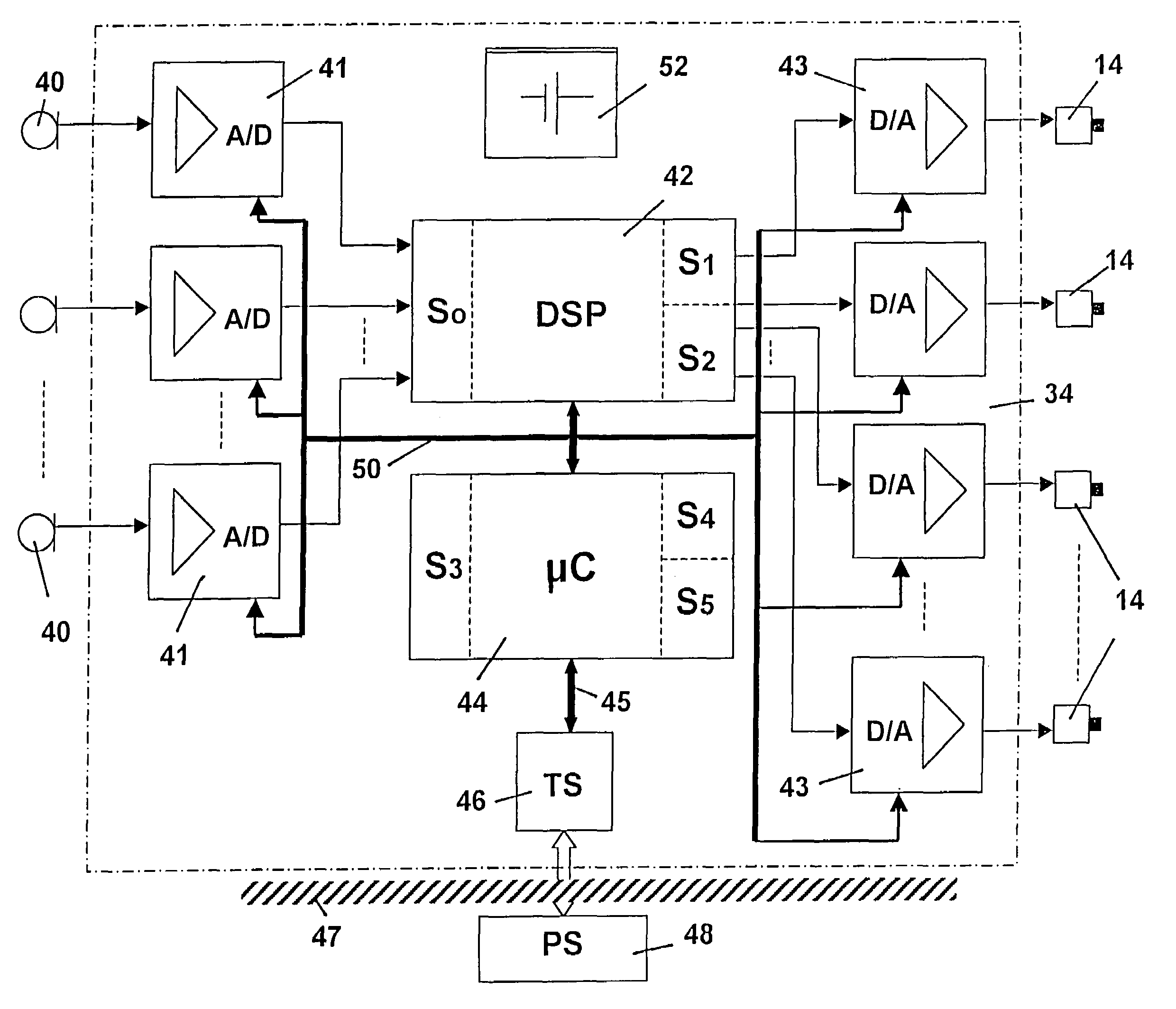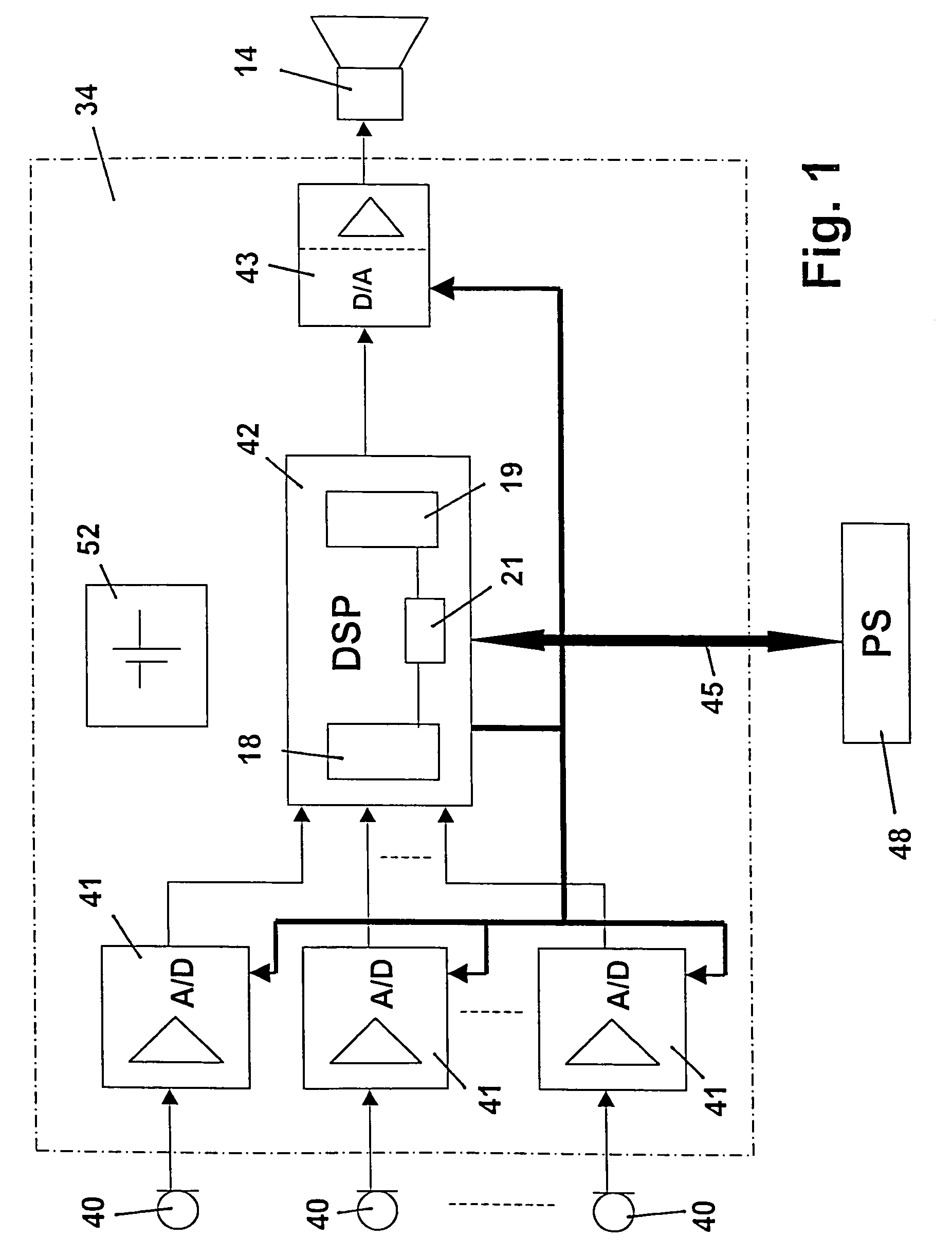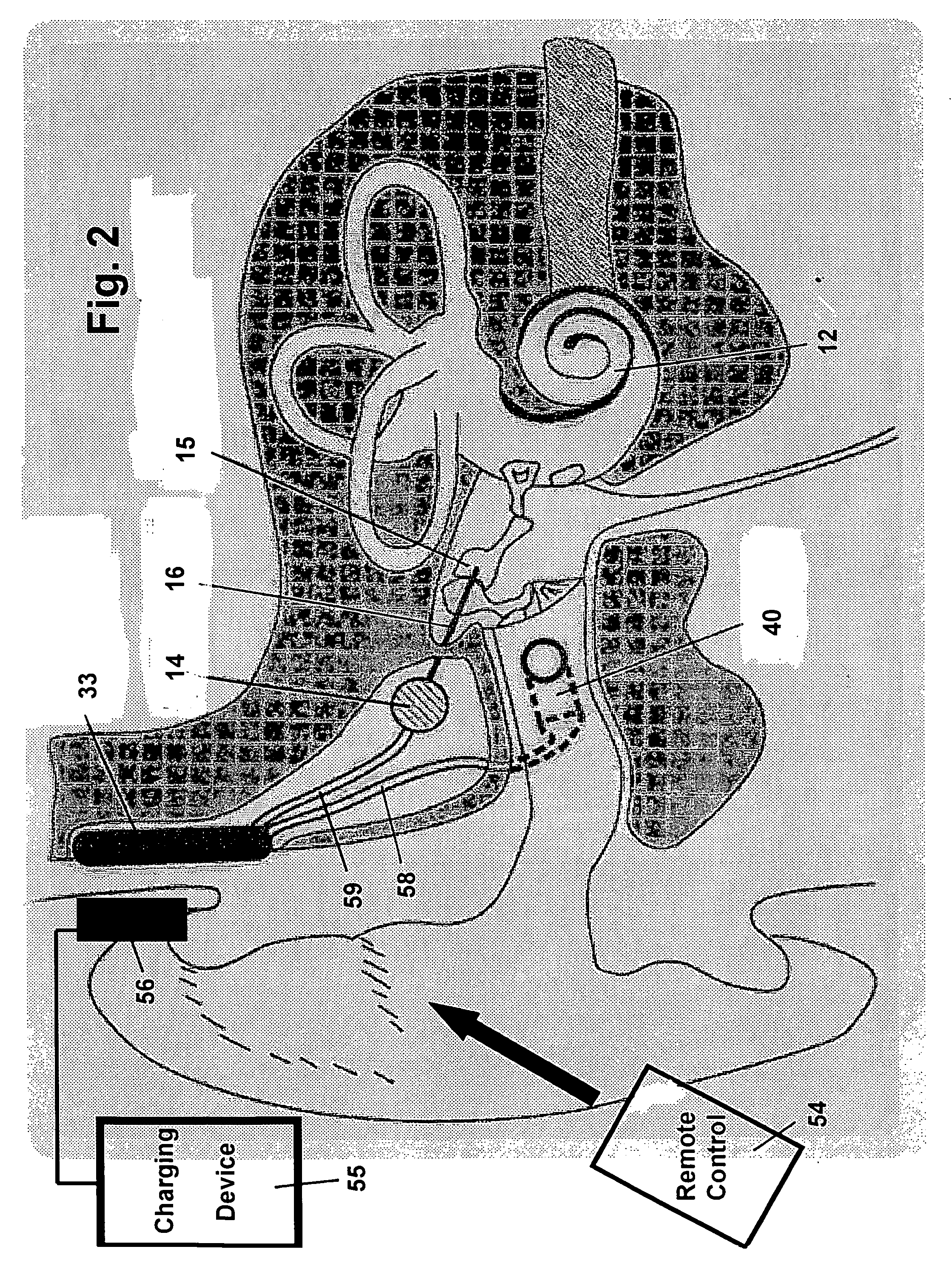System for rehabilitation of a hearing disorder
a hearing disorder and rehabilitation system technology, applied in the field of hearing disorder rehabilitation system, can solve the problems of limited spectral bandwidth which can be transmitted, adverse effect on the resulting sound quality, and inability to reach the sufficient loudness level, etc., to achieve the effect of generating loudness, reducing the difficulty of speech analysis, and improving speech understanding
- Summary
- Abstract
- Description
- Claims
- Application Information
AI Technical Summary
Benefits of technology
Problems solved by technology
Method used
Image
Examples
Embodiment Construction
[0101]FIG. 1 shows a block diagram of a nonimplantable hearing aid in which there are one or more acoustic sensors (microphones) 40 which convert the acoustic signal into an analog electrical signal to pick up the external acoustic signals. Downstream of each acoustic sensor 40, a module 41 is connected in which the electrical output signal of the pertinent acoustic sensor 40 is preprocessed, especially pre-amplified, and converted into a digital signal (A / D). The pre-amplification and A / D converter modules 41 are part of an electronic signal processing unit labeled 34 throughout. The signal processing unit 34 includes a digital signal processor 42 (DSP) which further processes the digitized sensor signals and triggers a digital-analog converter (D / A) final amplification module 43. In the module 43, the digital output signal of the signal processor 42 is converted into an analog signal and amplified, and then supplied to an actuator 14 which is made in the conventional manner as an ...
PUM
 Login to View More
Login to View More Abstract
Description
Claims
Application Information
 Login to View More
Login to View More - R&D
- Intellectual Property
- Life Sciences
- Materials
- Tech Scout
- Unparalleled Data Quality
- Higher Quality Content
- 60% Fewer Hallucinations
Browse by: Latest US Patents, China's latest patents, Technical Efficacy Thesaurus, Application Domain, Technology Topic, Popular Technical Reports.
© 2025 PatSnap. All rights reserved.Legal|Privacy policy|Modern Slavery Act Transparency Statement|Sitemap|About US| Contact US: help@patsnap.com



